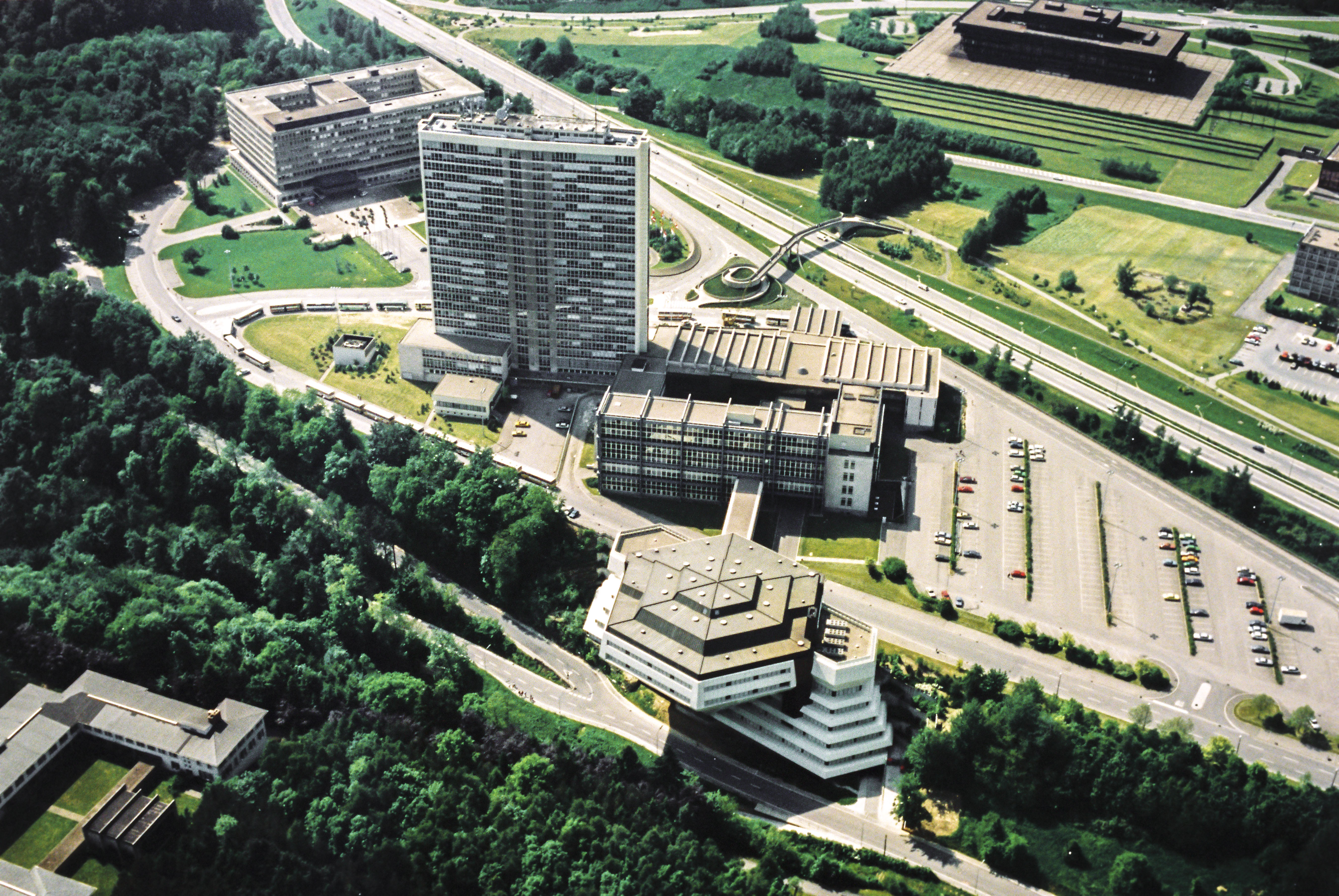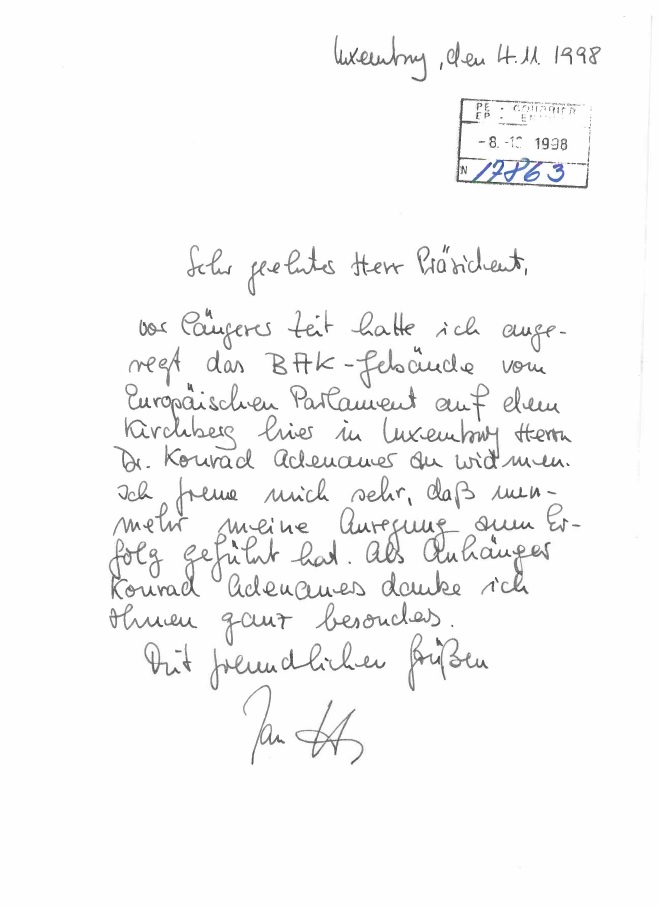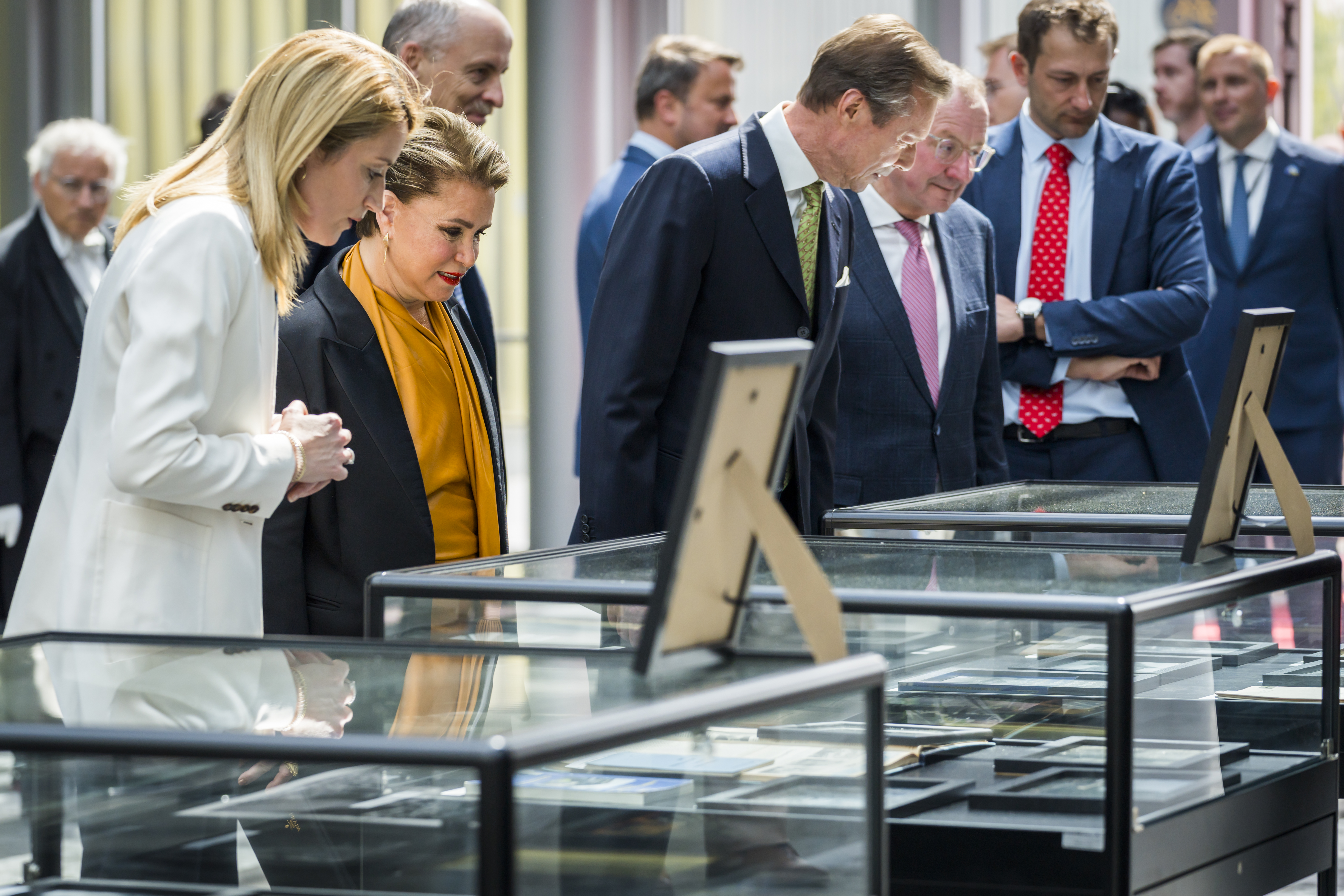A journey through time, unpublished documents
The inauguration of the new Konrad Adenauer building on Tuesday 10 May provided the opportunity to unveil a new exhibition ‘The Buildings Tell’, which also commemorates 70 years of the European Parliament in the Grand Ducal capital. The exhibition gathers photos, posters, architectural sketches and plans and unpublished archival documents that trace the evolution of the Parliament’s presence in Luxembourg, beginning with a decision to make Luxembourg the seat of the High Authority of the European Coal and Steel Community (ECSC) in 1952, to the inauguration of the newest addition to Parliament’s presence in the country this week.
 In the building vacated by the management of the CFL on the Place de Metz, where the “Charly” steam tram passed by, the first officials of the High Authority of the ECSC began work. Photothèque de la Ville de Luxembourg © In copyright
In the building vacated by the management of the CFL on the Place de Metz, where the “Charly” steam tram passed by, the first officials of the High Authority of the ECSC began work. Photothèque de la Ville de Luxembourg © In copyright
Luxembourg: an integral part of the history of the European Parliament
The relationship between the Grand Duchy and the European Parliament has a rich history. Over the past seventy years, the emblematic buildings of Parliament, including old and sometimes unknown architectural projects, have been the scenes of relations between Parliament and Luxembourg, played host to visits by dignitaries such as Pope Jean Paul II and Egyptian President Anwar al-Sadat, and have been witnesses to the institutional development of the world’s first internationally elected Parliament. The exhibition tells the story of the Parliament through the prism of these buildings, as well as showing how people themselves shaped the physical institutions over the years, from the foundation of the very first European Schools created in the 1950s out of a need to educate the children of ECSC staff, to the involvement of Luxembourgish citizens in the development of the city’s European quarter.
 On 1 June 1976, Grand Duke Jean and his wife Grand Duchess Charlotte of Luxembourg attended the solemn opening session of the ACP-EEC Consultative Assembly together in the hemicycle the Schuman building © European Communities 1976 – European Parliament
On 1 June 1976, Grand Duke Jean and his wife Grand Duchess Charlotte of Luxembourg attended the solemn opening session of the ACP-EEC Consultative Assembly together in the hemicycle the Schuman building © European Communities 1976 – European Parliament
Both the European Parliament and Luxembourg would be shaped by their 70-year relationship, and the buildings of this exhibition are perhaps the most visible testimonies to this connection. It had a very real influence on the cityscape of Luxembourg: the former home of the High Authority of the European Coal and Steel Community at Place de Metz is familiar to any visitor to Luxembourg’s city centre; the Alcide De Gasperi tower was Luxembourg’s first skyscraper, inaugurated as part the Luxembourg skyline in 1966, while the urbanisation and development of the Kirchberg Plateau since the 1960s is a fundamental part of the country’s architectural history.
 Aerial view of European Parliament buildings in the Kirchberg district of Luxembourg. The Kirchberg Plateau Urbanization and Development Fund was created in 1961 and, in collaboration with the Public Buildings Administration, its mission was to urbanise a land reserve of 360 hectares. © European Communities 1995
Aerial view of European Parliament buildings in the Kirchberg district of Luxembourg. The Kirchberg Plateau Urbanization and Development Fund was created in 1961 and, in collaboration with the Public Buildings Administration, its mission was to urbanise a land reserve of 360 hectares. © European Communities 1995
Parliament, in turn, underwent much of its institutional development in Luxembourg. Though the city has officially been the seat of the Parliament’s Secretariat since 1992, its history is also a part of the political development of the institution. The city hosts two hemicycles: the Schuman building, inaugurated in 1973, contains very first Chamber solely intended for use by the European Parliament, and was followed in 1980 by the hemicycle of the ‘Petit Kueb’ (‘small raven’), which itself was the modification of the unrealised Centre 300 project nicknamed the ‘Grand Kueb’ (‘large raven’). The construction of the Kirchberg Administrative Building (BAK), renamed ‘Konrad Adenauer’ (KAD) began in 1998, signifying how the life of Parliament in Luxembourg had flourished in the preceding decades.
 In 1997 Jan Kilb, a Luxembourgish citizen, wrote to the President of the European Parliament José María Gil-Robles to suggest renaming the Bâtiment Administratif du Kirchberg (BAK) ("Administrative Building of Kirchberg") to "Konrad Adenauer". © Archives of the European Parliament 1997
In 1997 Jan Kilb, a Luxembourgish citizen, wrote to the President of the European Parliament José María Gil-Robles to suggest renaming the Bâtiment Administratif du Kirchberg (BAK) ("Administrative Building of Kirchberg") to "Konrad Adenauer". © Archives of the European Parliament 1997
Those interested in learning more about Parliament’s life in Luxembourg can visit the exhibition currently display in the hallway of the new Konrad Adenauer building. It is a joint effort of the Archives Unit and the Directorate for the Library and Knowledge Services (DG EPRS). Document and photos have kindly been made available from Archives of the European Parliament, the Photothèque de la Ville de Luxembourg, Historical Library of the European Parliament, Musée d'Histoire de la Ville de Luxembourg (Lëtzebuerg City Museum) and private collections.
Inauguration of the Konrad Adenauer building of the EP in Luxembourg in the presence of Grand Duke Henri of Luxembourg, EP President Roberta Metsola, and Luxembourgish Prime Minister Xavier Bettel © European Union 2022 Inauguration of the Konrad Adenauer new building in the presence of European Parliament President Roberta Metsola, His Royal Highness the Grand Duke of Luxembourg and the Prime Minister of Luxembourg Xavier Bettel. European Union 2022 – European Parliament
Inauguration of the Konrad Adenauer new building in the presence of European Parliament President Roberta Metsola, His Royal Highness the Grand Duke of Luxembourg and the Prime Minister of Luxembourg Xavier Bettel. European Union 2022 – European Parliament